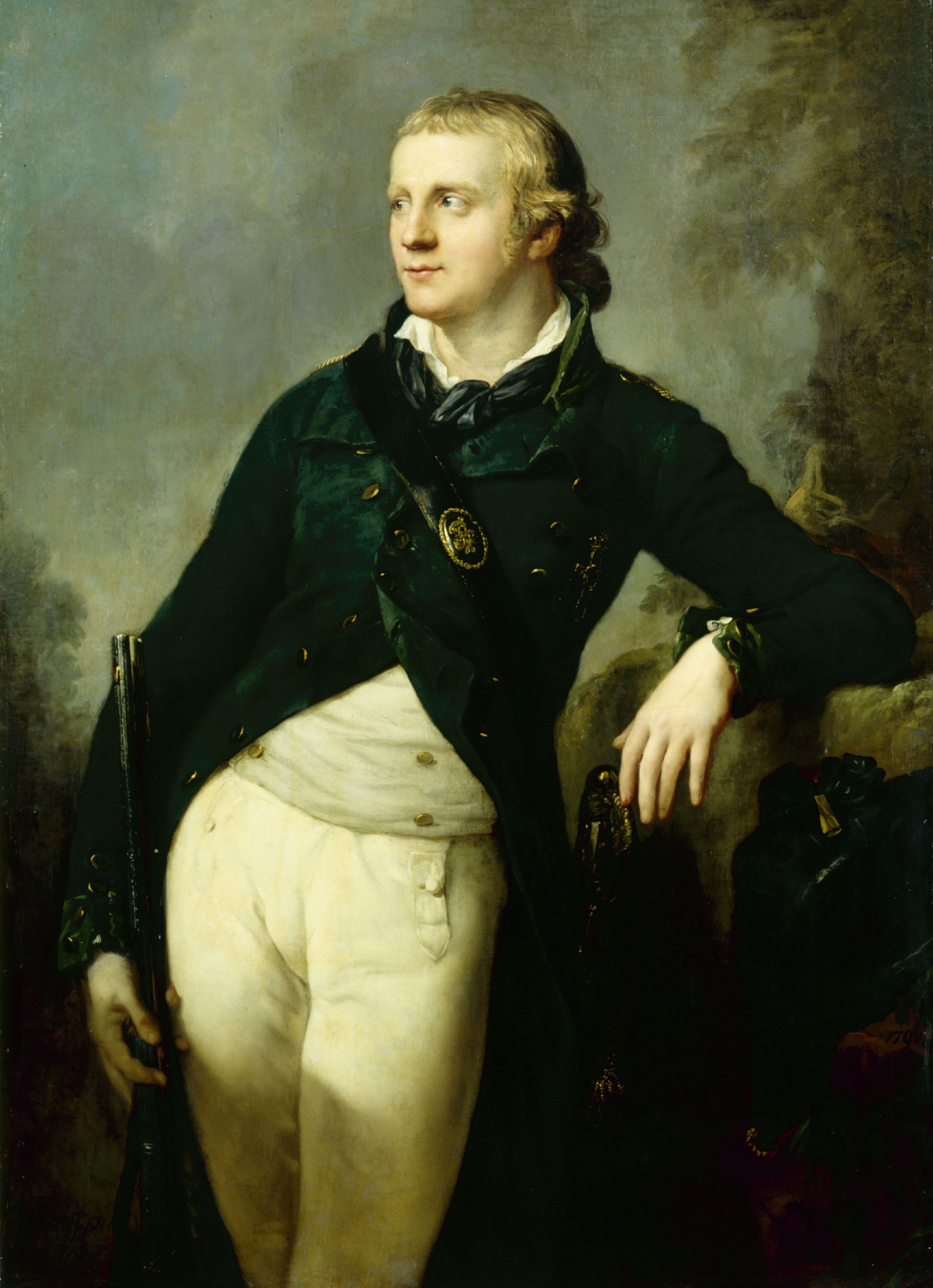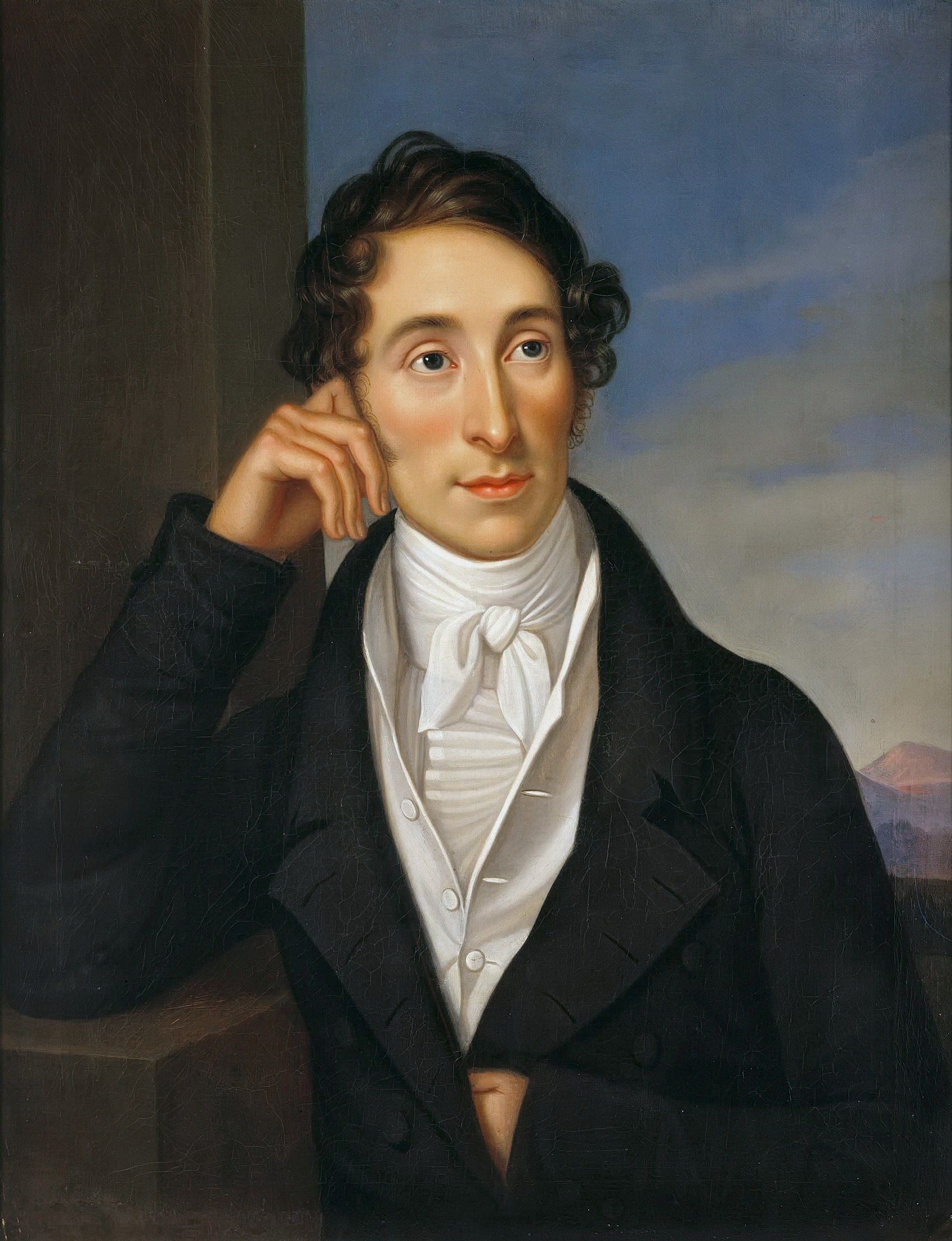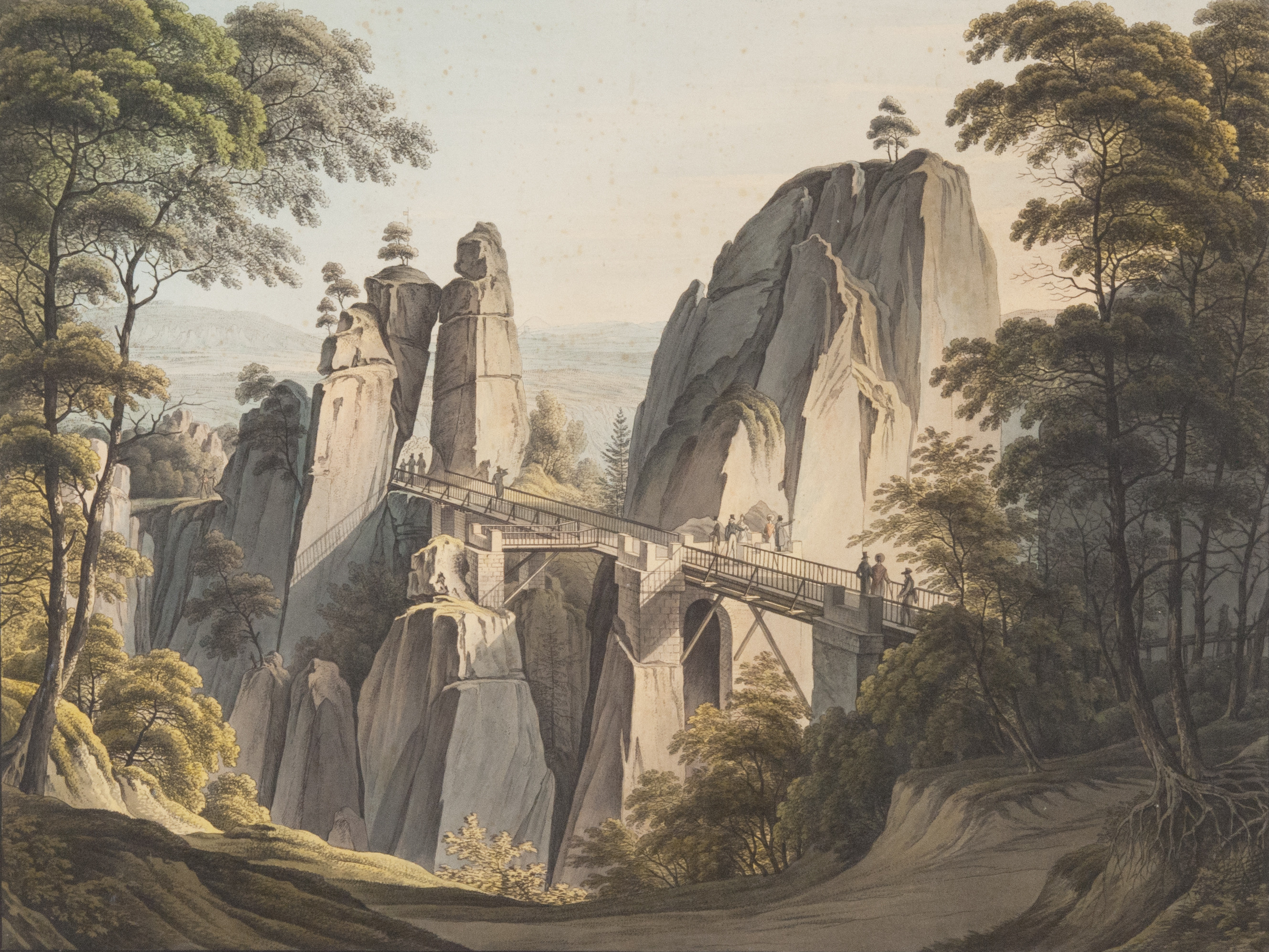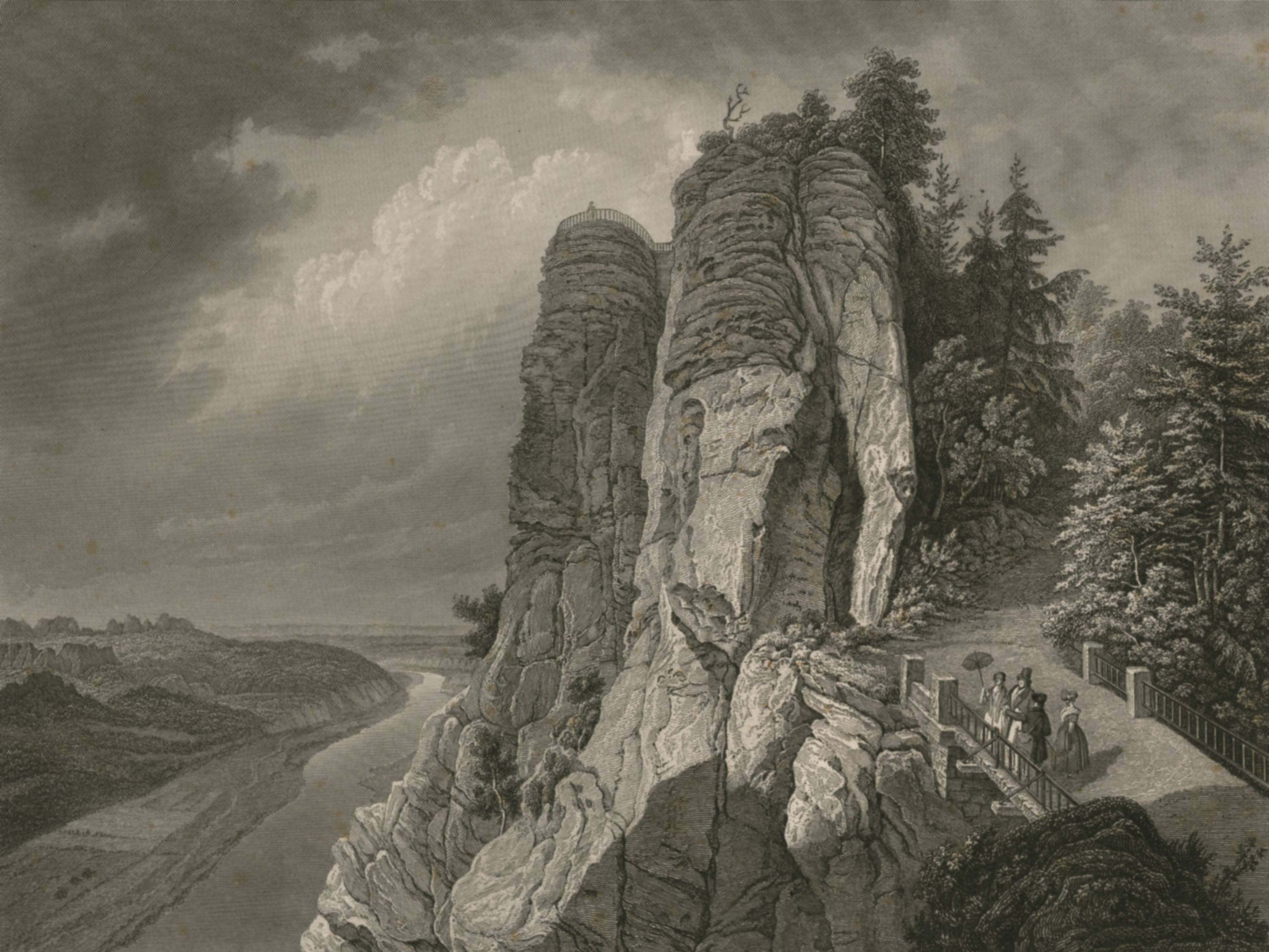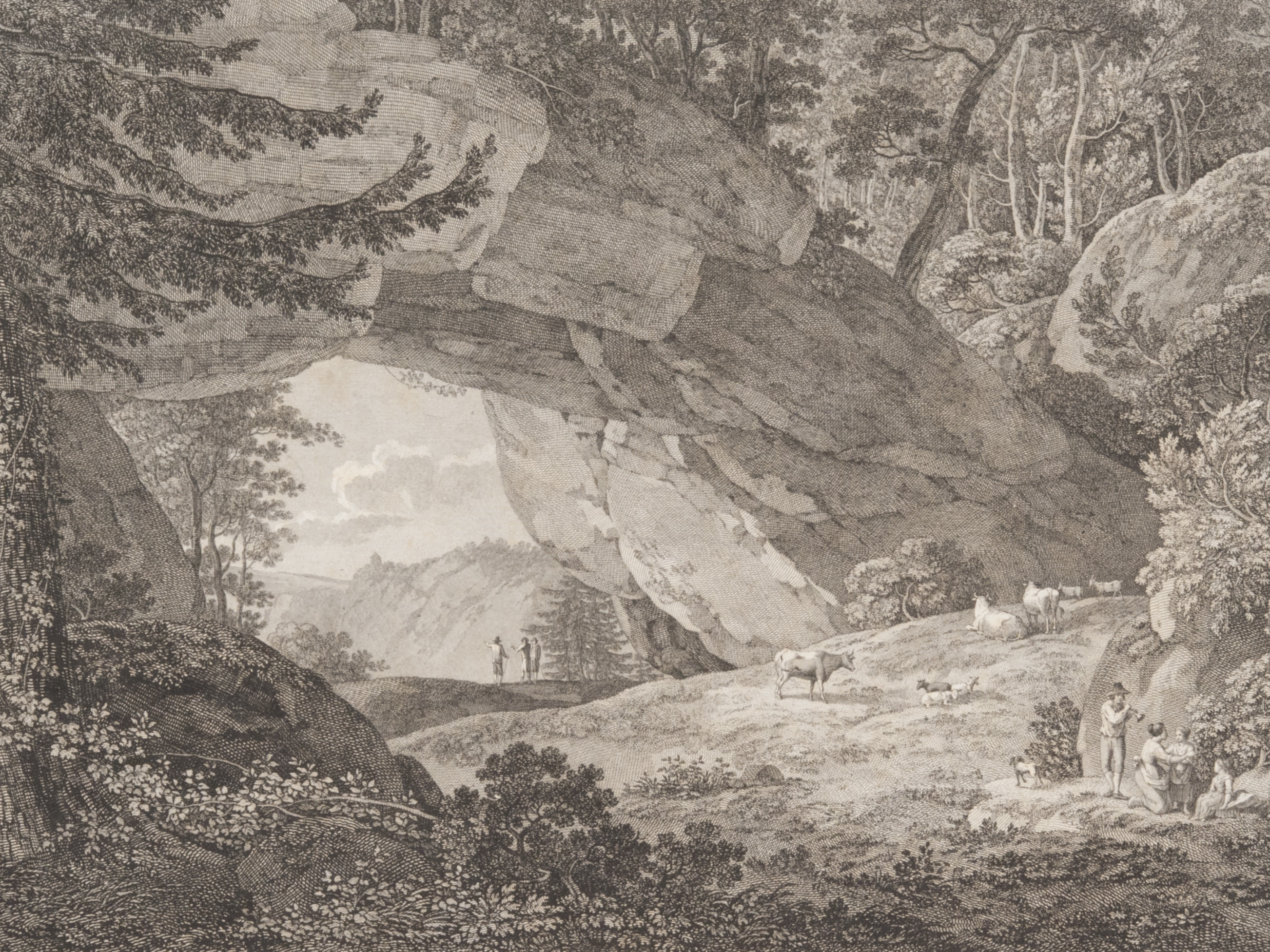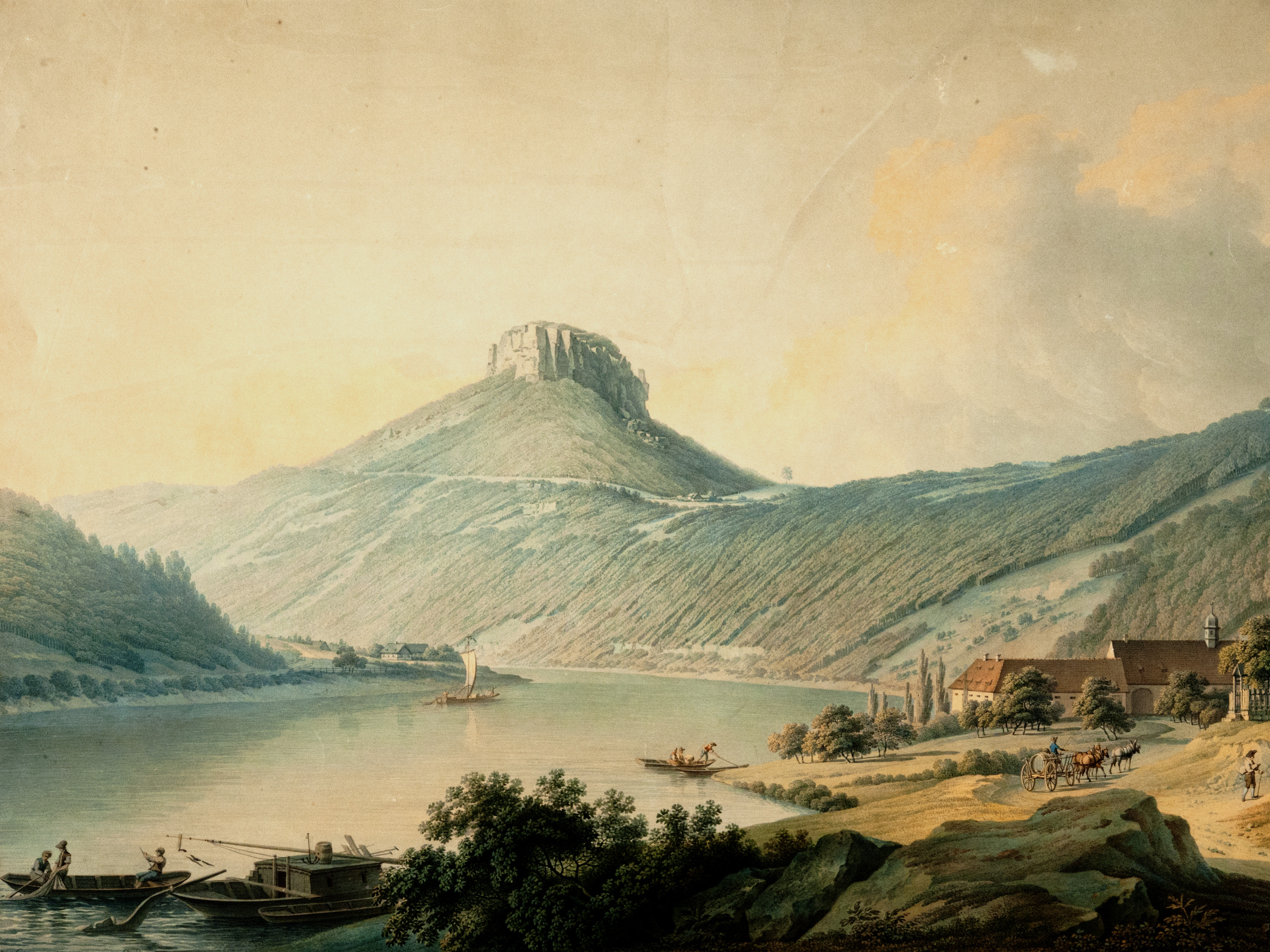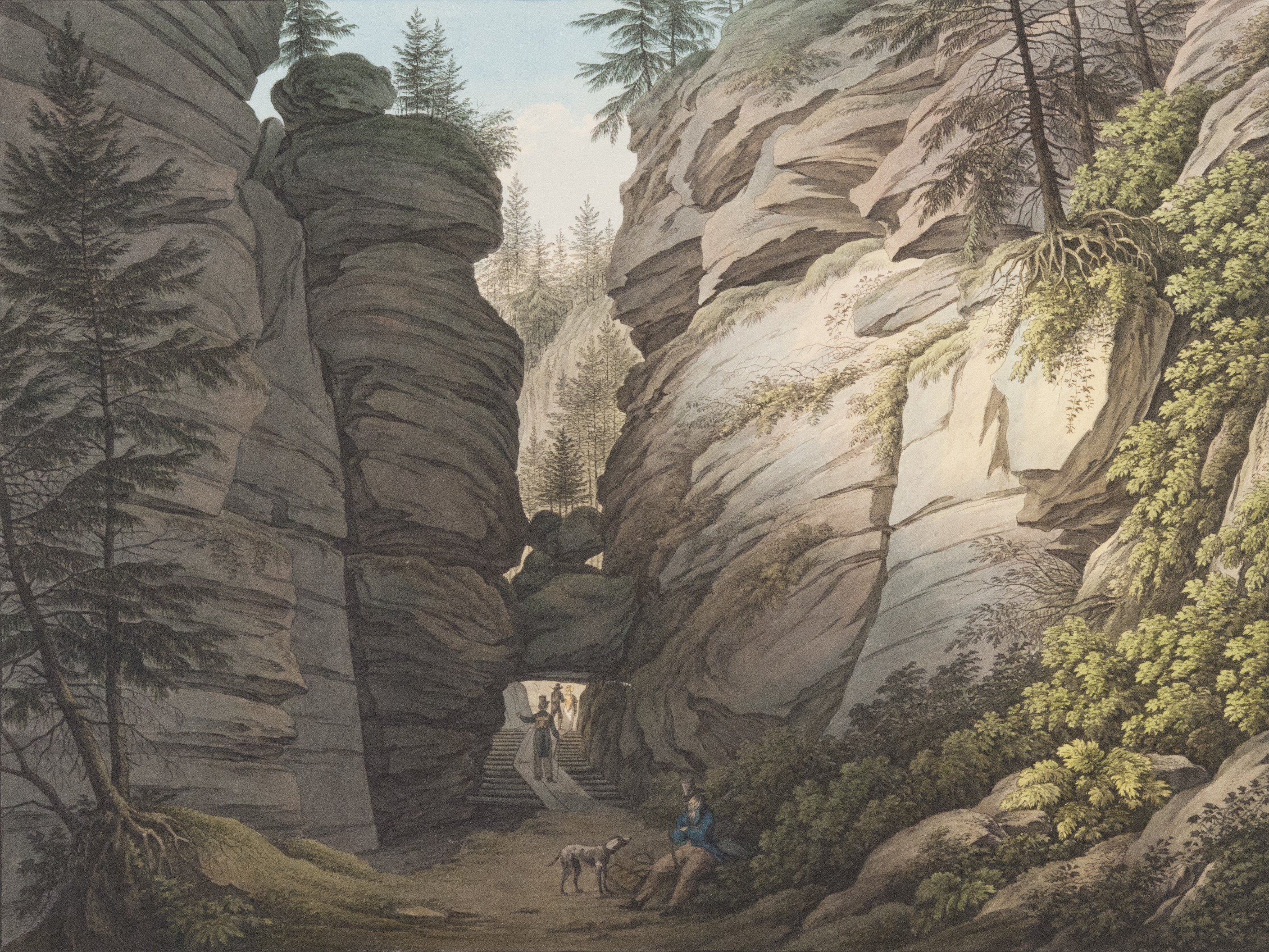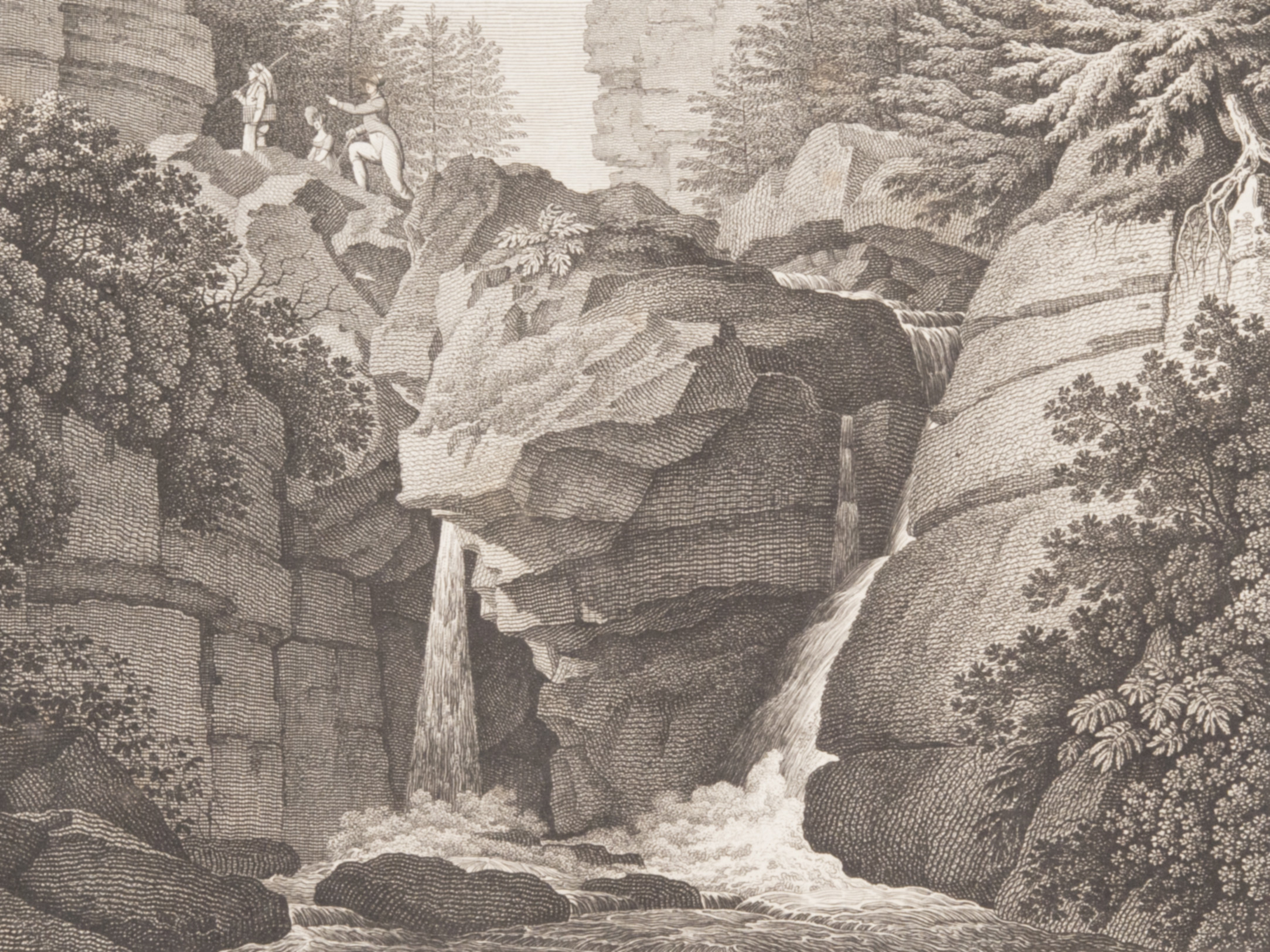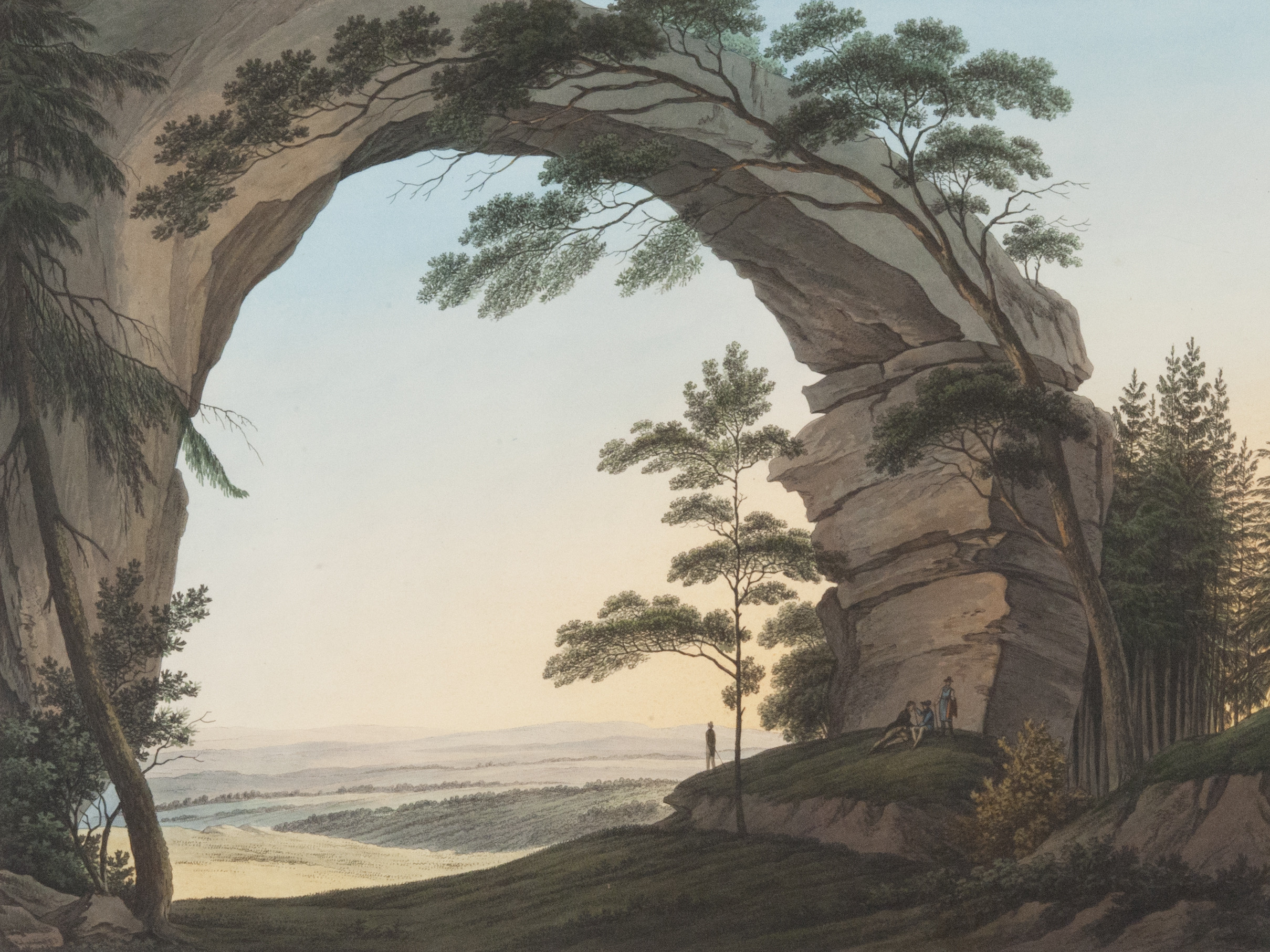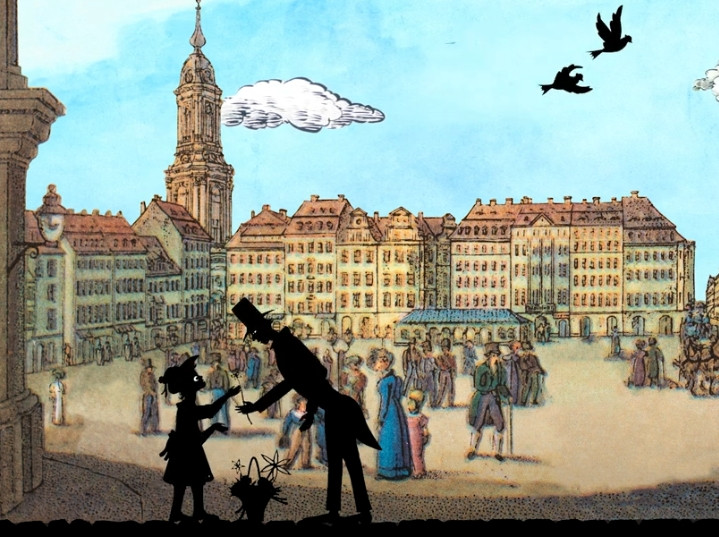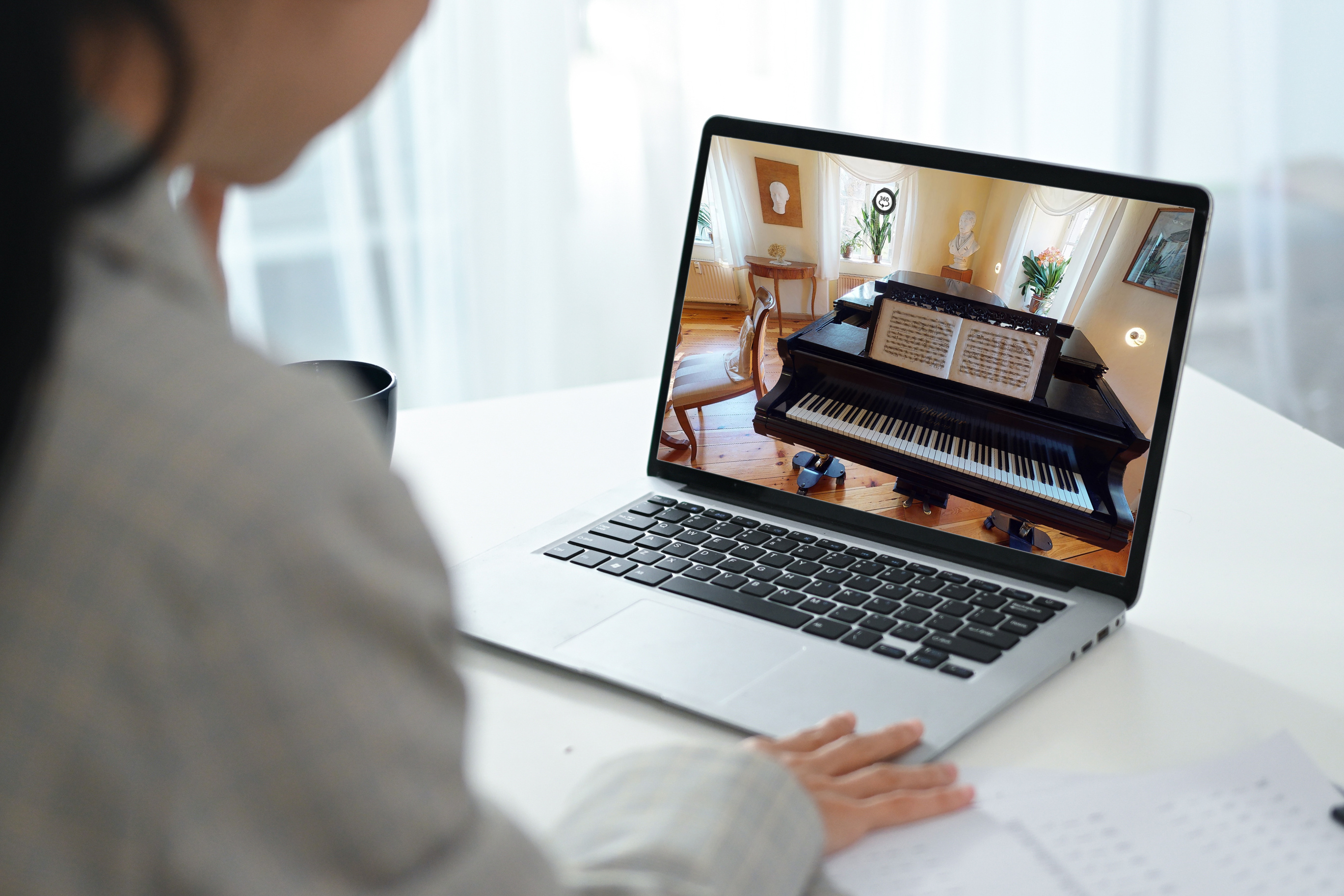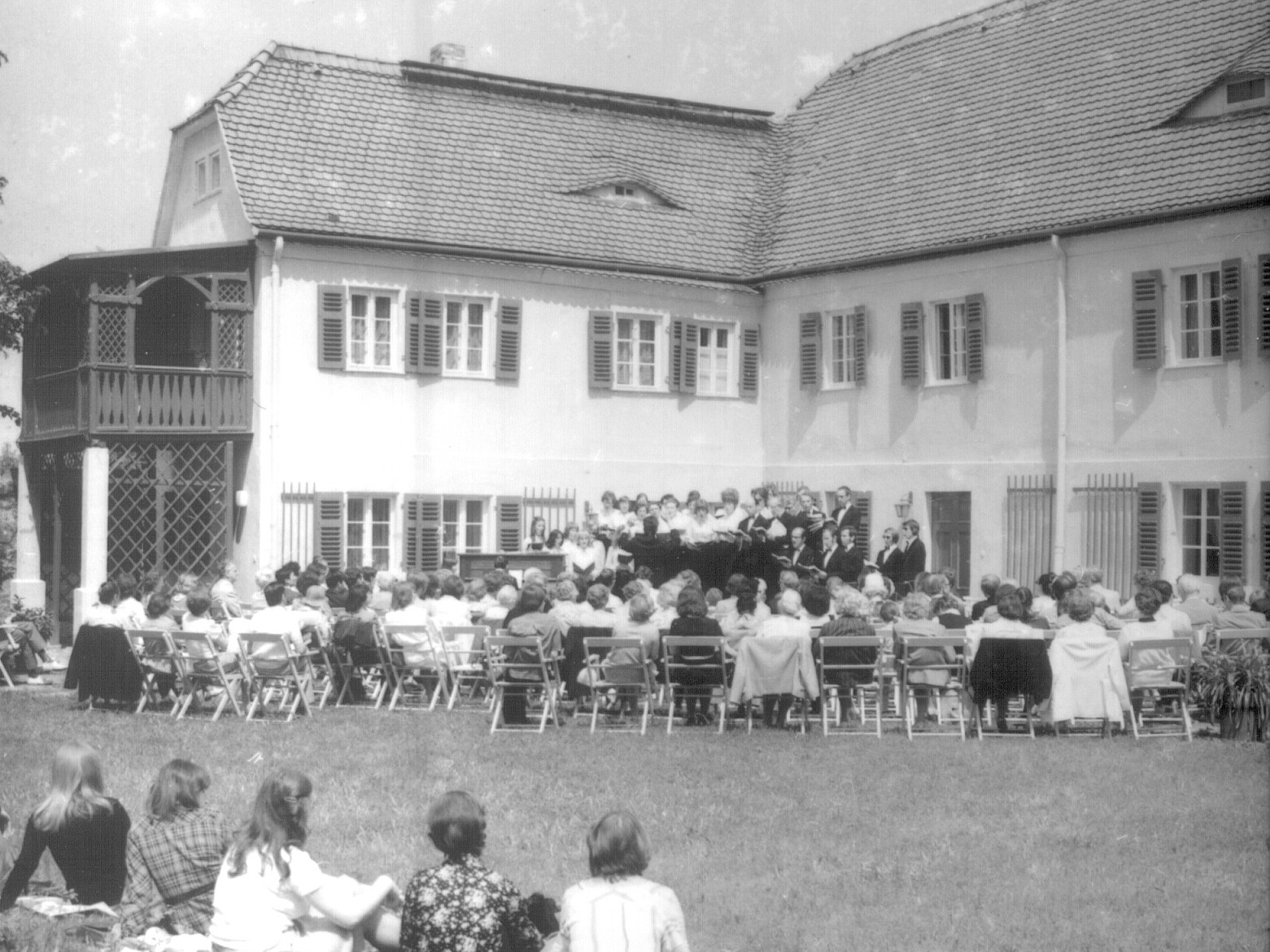Arrival in Dresden
»Dresden won't catch me again!« wrote Carl Maria von Weber (1786 – 1826) in his diary on 14 February 1812 after his first visit to the city on the Elbe. He was on a concert tour and had only been able to generate a small income in Dresden:
»Never have I found a place where we were received so miserably by the inhabitants..«

The fact that he would live here as court conductor from 1817 – just a few years later – and work here until his death in 1826 was not yet foreseeable to him at the time. It had actually been Weber's wish to be engaged in Berlin following his appointment as Kapellmeister at the Estates Theatre in Prague (1813 – 1816), as he wrote to Carl von Brühl immediately before taking up his post as Berlin General Director in 1814. However, these plans came to nothing and in 1820 the Prussian King Frederick William III engaged the Italian composer and conductor Gaspare Spontini as General Music Director at the Royal Opera House.
Carl Maria von Weber was born on 18 or 19 November 1786 in Eutin near Kiel. His father, Franz Anton von Weber, worked there as a town musician. His mother, Genovefa von Weber, was an opera singer. There were several half-siblings from his father's first marriage, all of whom worked as musicians. The family only stayed in Eutin for a short time. From 1789 onwards, they travelled through Thuringia, Franconia and the Salzburg region as the Weber Opera Company.
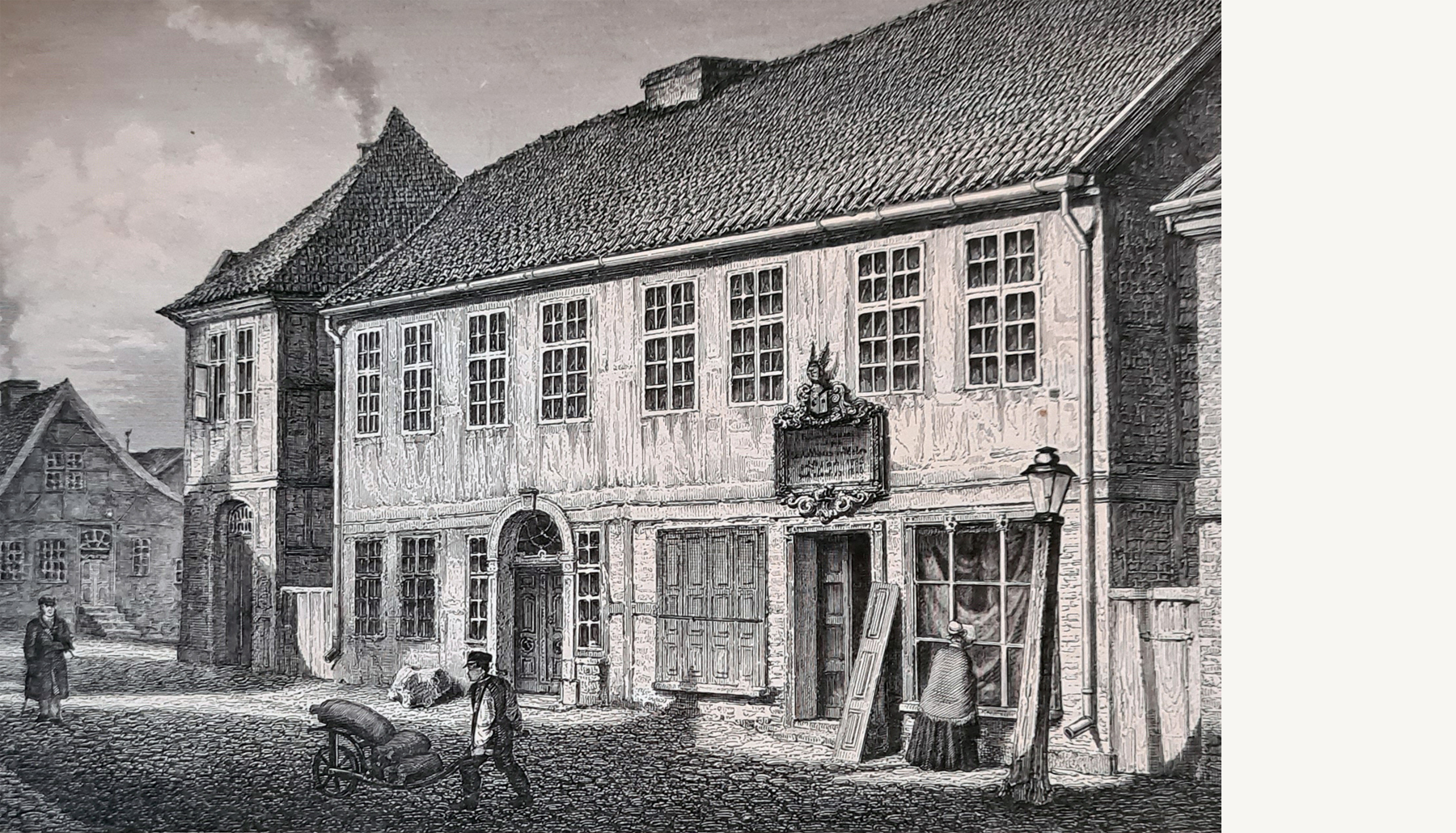
Weber's childhood was marked by travel and life on the theatre stage. He never stayed in one place for long with his father's opera company. However, he got to know the world of theatre from an early age and knew what people were enthusiastic about. From 1791, when Weber was 5 years old, his first small appearances at the theatre have been recorded.
Weber and his siblings received extensive musical training from their father, and Carl Maria was seen as a »child prodigy«. From the age of ten, Weber received intensive musical training from Michael Haydn and Abbé Vogler. He wrote his first compositions, such as the »Six Fugues«, which his father had printed in Salzburg.
After the death of his mother in 1797, Weber received further composition and singing lessons in Munich. He composed his first opera »The Power of Love and Wine«. The work is considered lost.
On 24 November 1800, Weber's second opera »Das Waldmädchen« was premiered in Freiberg, Saxony – Weber was just 14 years old. However, the opera, touted as the work of a »child prodigy«, was not as successful as Weber had hoped and a public debate broke out about the quality of the piece. As a result, father and son left the city and travelled to Salzburg. It was in Salzburg that Weber's third opera »Peter Schmoll« was written, the autograph of which is now kept in the Saxon State and University Library in Dresden.
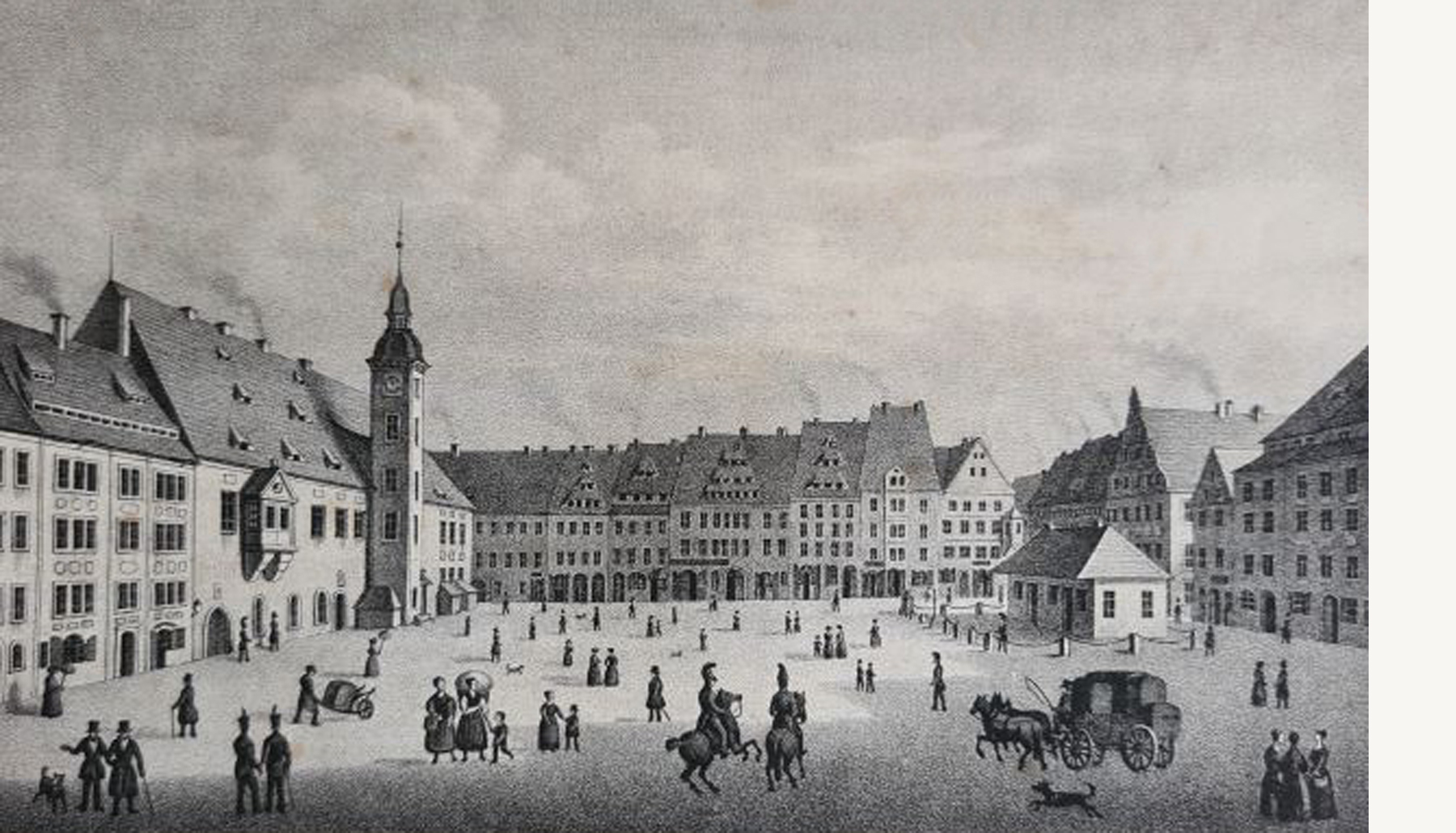
In 1804, at the age of 18, Carl Maria von Weber took up his first position as Kapellmeister at the Breslau Theatre, for which his teacher, Georg Joseph Vogler, had recommended him. Weber's ambitious manner, discipline and rigour established his reputation as a conductor, although he was initially criticised for his fast tempi.
His earnings in Breslau were very low, so Weber resigned and tried to work as a teacher and freelance composer. In 1806, Weber accepted the invitation of Duke Eugene I of Württemberg and lived for several months at his castle in Carlsruhe in Silesia, where he composed numerous instrumental works. The duke awarded him the title of »music director«.
Weber was forced to leave Carlsruhe when the French troops moved in. He moved to Stuttgart, where he took up a position as Privy Secretary to Duke Louis in 1807. Weber created chamber music and began his novel »Tonkünstlers Leben«, which, however, remained a fragment. He also wrote the opera »Silvana«. Due to his lavish lifestyle and the financial manipulations of his employer, Weber was imprisoned together with his father in 1810 and expelled from the country after serving his sentence. Since then, Weber subjected himself to strict financial controls.
Between 1810 and 1813, Weber gave numerous concerts, travelled extensively and continued to take lessons from Vogler. Weber tried to obtain a position as a bandmaster. His unsettled life between Mannheim, Heidelberg and Darmstadt was characterised by his friendship with the musicians Jakob Liebmann Meyer Beer (Giacomo Meyerbeer), Gottfried Weber and Alexander von Dusch, with whom he founded a »Harmonischer Verein«. This was intended to promote the reputation of its members in the music world through publications and anonymous reviews.
In 1813, Carl Maria von Weber took up a new position as Kapellmeister at the Estates Theatre in Prague. The singer Caroline Brandt, who had played the leading role in his opera »Silvana« in Frankfurt am Main, was also engaged. Weber championed German opera in Prague and conducted several premieres and first performances. However, due to the heavy workload, he did not extend the three-year contract.
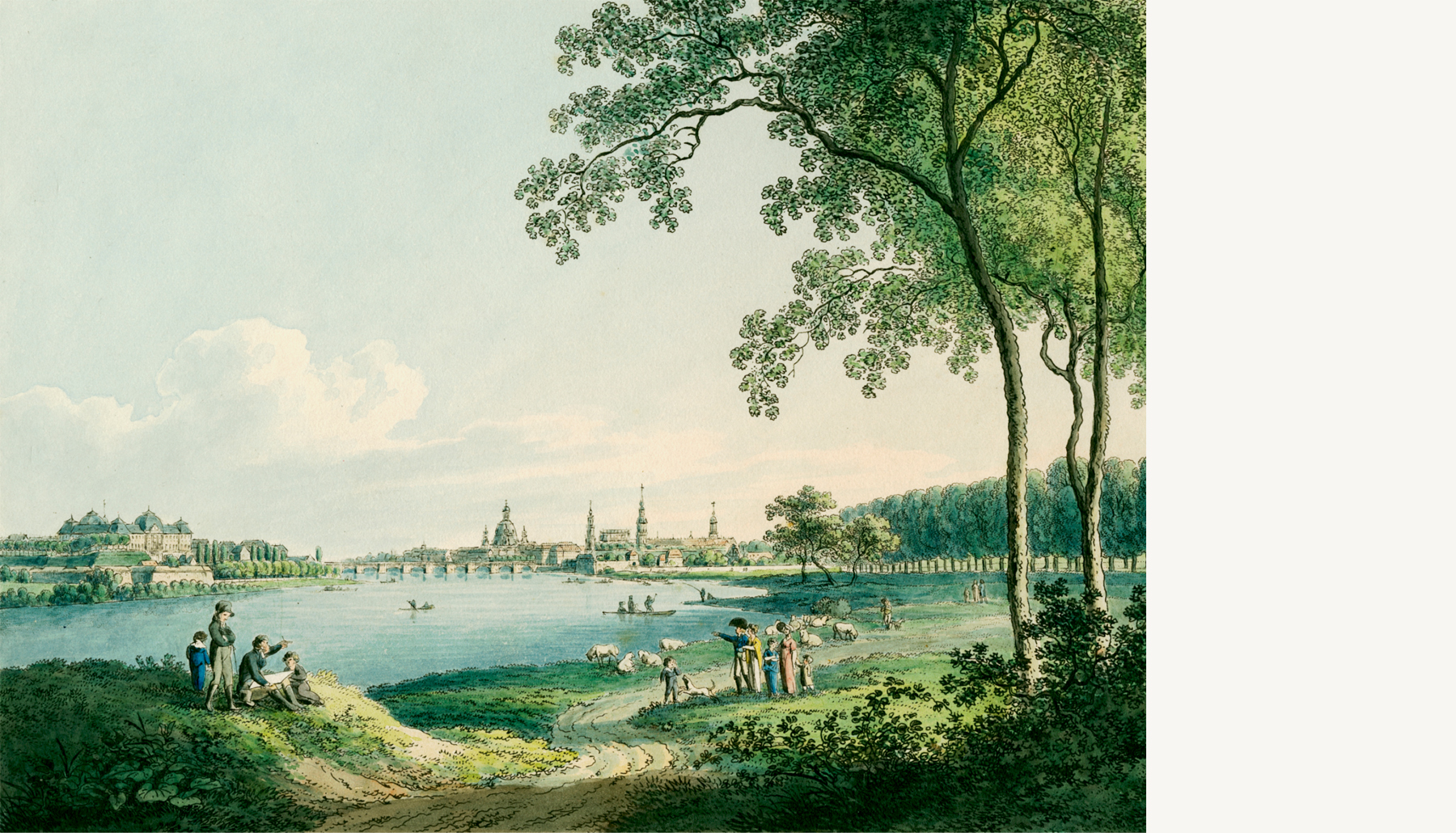
Weber was looking for a new place to work. Berlin, which would actually have been his first choice, did not offer him a position. Königsberg and Leipzig, on the other hand, were only of secondary interest to Weber when the offer came to direct a newly founded German opera house in Dresden. Weber agreed and was officially appointed to Dresden on 25 December 1816.
Weber as court conductor in Dresden
On 25 December 1816, Weber was officially appointed to the Dresden Court Theatre as Court Kapellmeister of the newly founded German Department of Opera. The suggestion to establish a German department and to engage Weber had been made by the theatre director Heinrich Graf Vitzthum von Eckstädt, and Elector Friedrich August I finally agreed to the proposal. The condition that Weber should also be responsible for church music and support the Italian court conductor Francesco Morlacchi in the performances of Italian opera was a constant source of annoyance.
As court conductor, Weber implemented numerous innovations with a firm hand, even in the face of resistance: He established a new orchestral seating arrangement, introduced the use of the baton and founded a professional opera chorus and a ballet.
In addition to his duties as court conductor, Weber was as productive as he was successful as a composer: in 1821, he celebrated a sensational success with his opera »Der Freischütz«, which premiered at the Königliches Schauspielhaus Berlin on 18 June 1821. Requests from all over Europe followed. His most important works were composed in Dresden, including the operas »Euryanthe« and »Oberon«, cantatas, songs, orchestral works, chamber music and two masses. However, the »Freischütz« still outshines the Romantic composer's extensive oeuvre to this day.
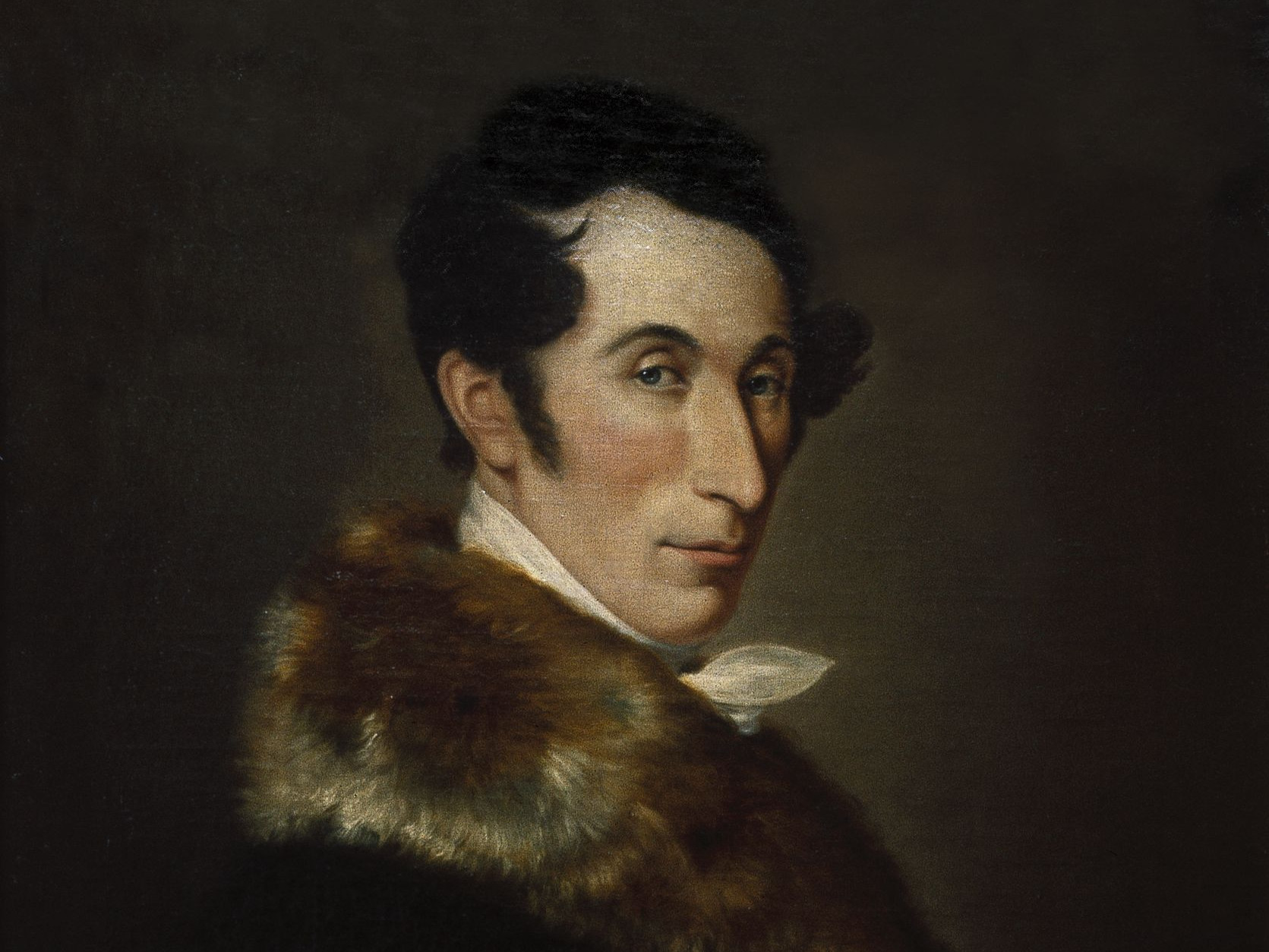
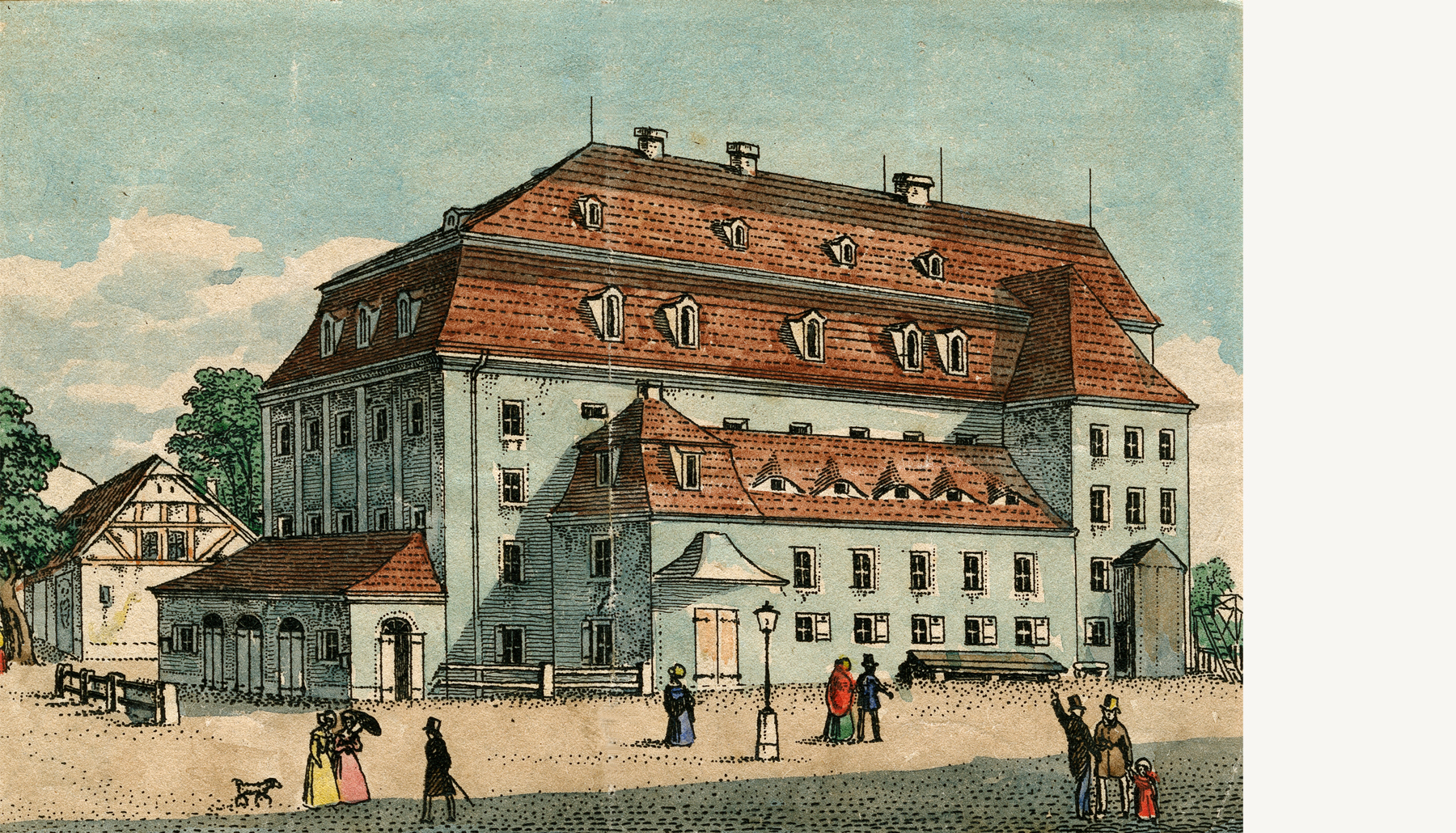
The Little Court Theatre, also known as the Moretti Opera House, was Weber's main place of work – he conducted numerous operas here. The building was constructed in 1761 by the Italian opera impresario Pietro Moretti, who built a commercial theatre there. In 1763, it was bought by the court and used as a court theatre, as the large opera house at the Zwinger had become too expensive to maintain. The Small Court Theatre could seat around 800 spectators and was used until the inauguration of the first Semper Opera House in 1841.

The theatre in the Lincke Baths was located outside the city near today's Deaconess Hospital. Weber conducted numerous performances there, as the court had rented the building from 1817. By 1826, a quarter of all opera performances took place in the suburban theatre.
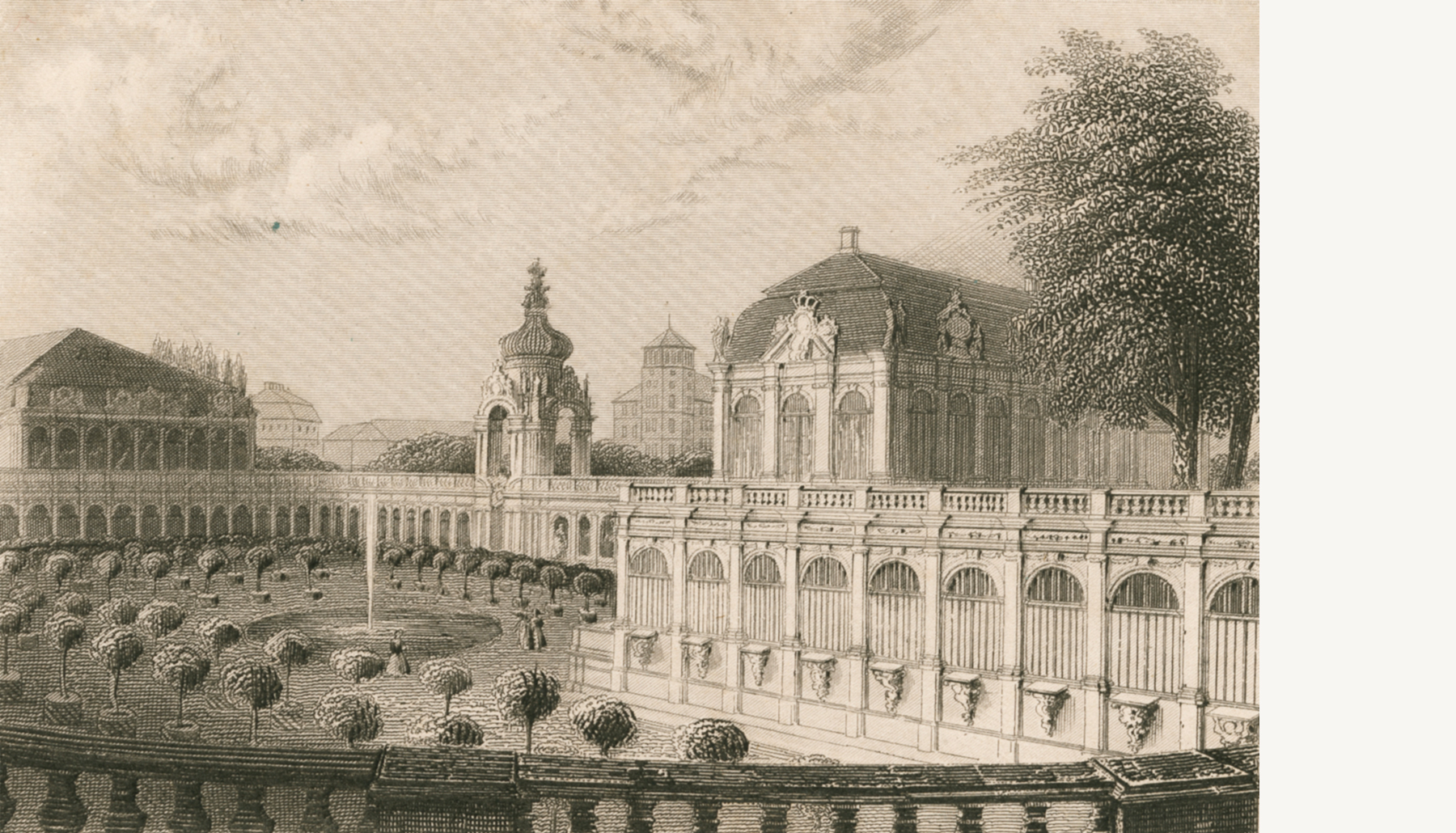
In Weber's time, the large opera house at the Zwinger was only used for concerts as it was too expensive to run. Weber conducted a benefit concert here on 6 June 1824 for victims of the town fire in Schwarzenberg. The building was built in 1719 for the wedding of the Crown Prince as one of the largest opera houses north of the Alps and could hold up to 2,000 spectators. After 1763, it was only used for festivities, concerts and balls. In 1848, it burned down during the May Uprising.
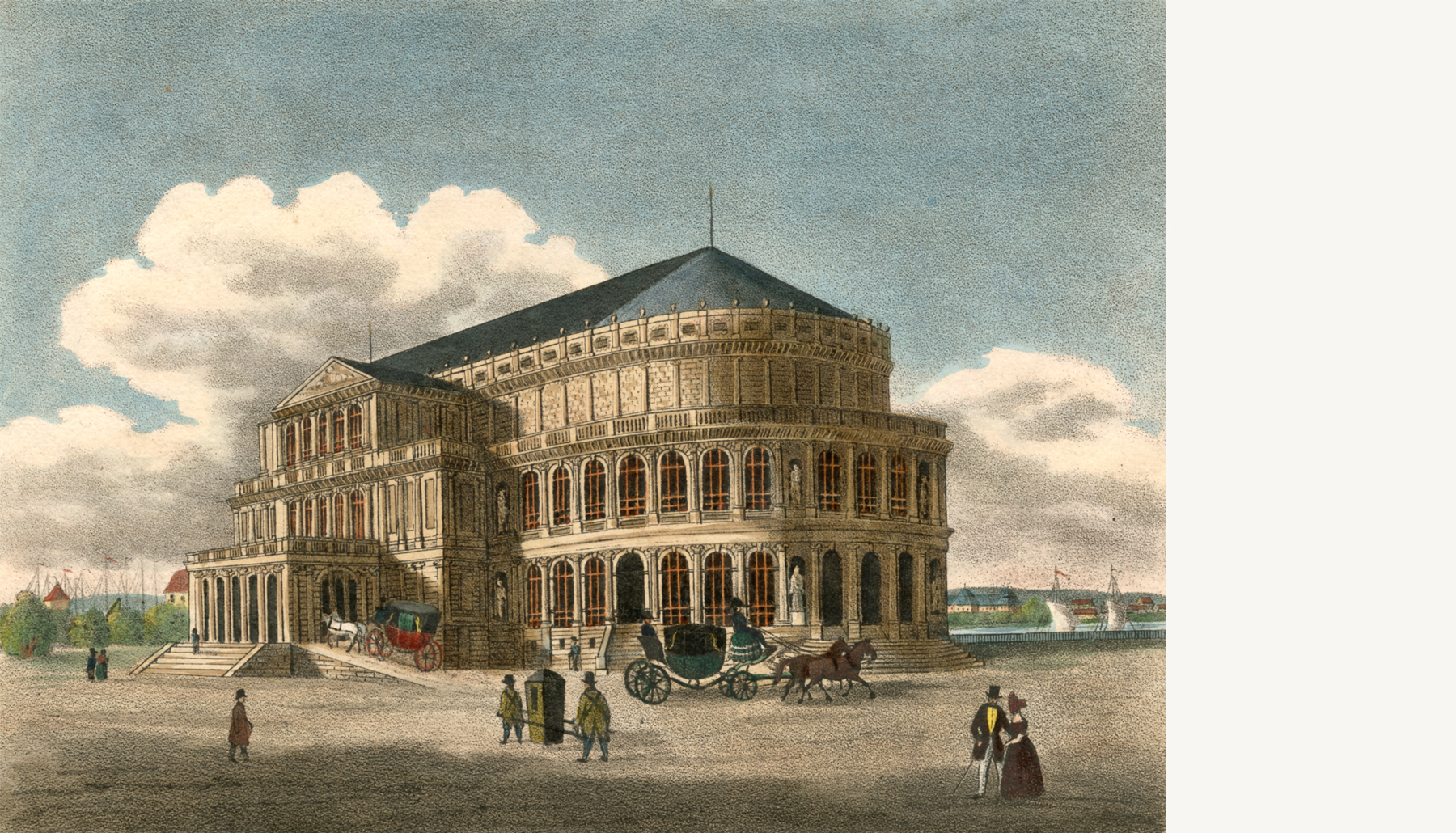
Gottfried Semper's first opera house, built between 1838 and 1841, was orientated towards the Elbe. Several of Richard Wagner's operas premiered here. It was very modernly equipped and had, for example, a gas lighting system. During maintenance work on the pipes in 1869, the gas ignited and the theatre burned down.
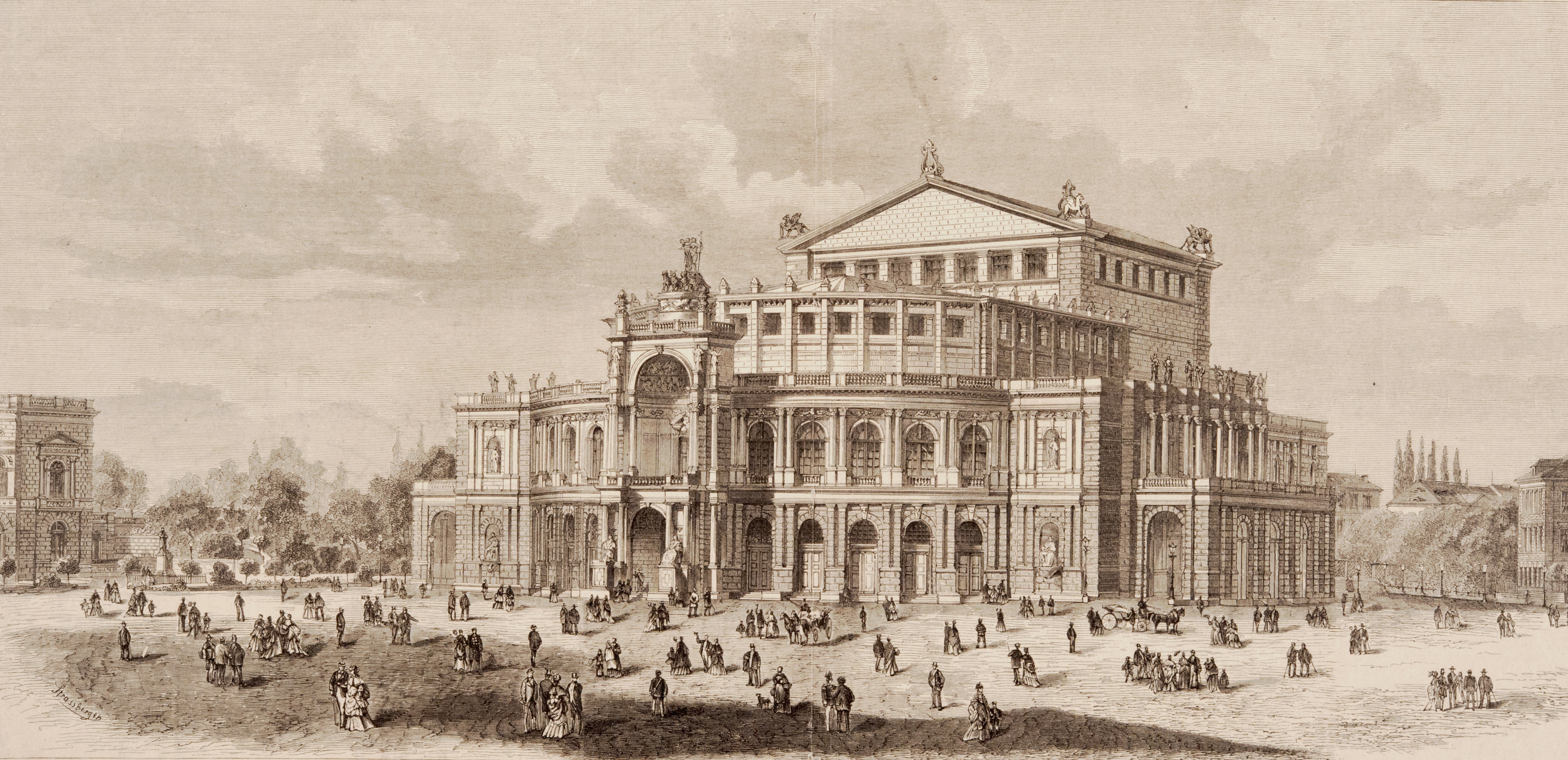
After the destruction of the first Semper Opera House, Gottfried Semper, who had also taken part in the May Uprisings of 1848 and had been forced to leave Saxony, designed the second Semper Building in exile. His son Manfred was in charge of the construction work in Dresden. The opera house was inaugurated in 1878 with Weber's »Jubilee Overture«.
Weber quickly became part of Dresden society: he became a member of the Dresden Liederkreis, organised his own evening parties and cultivated contacts with Dresden personalities such as the writers Ludwig Tieck, Friedrich Kind, Carl August Böttiger and Theodor Hell (alias Theodor Winkler), the painter Gerhard von Kügelgen and the singers Helmina von Chézy and Wilhelmine Schroeder-Devrient.


The man Carl Maria von Weber
In his countless letters and diary entries, Weber comes across as a likeable, humorous, fundamentally optimistic and devout person. At the same time, he appears as a passionate, energetic and disciplined musician who was at home in the theatre and wanted to make a difference. He was committed to German theatre and was enthusiastic about projects. In doing so, he chose sometimes unconventional ways to achieve his goals. In addition to his work as a composer and conductor, he tried his hand at writing and passed on his knowledge to pupils. Until shortly before his death, he stood at the conductor's podium in order to provide financial security for his family. His ever-increasing workload sometimes overwhelmed his fellow human beings and isolated him from them at times, causing him to fall into a »daily increasing melancholy«.


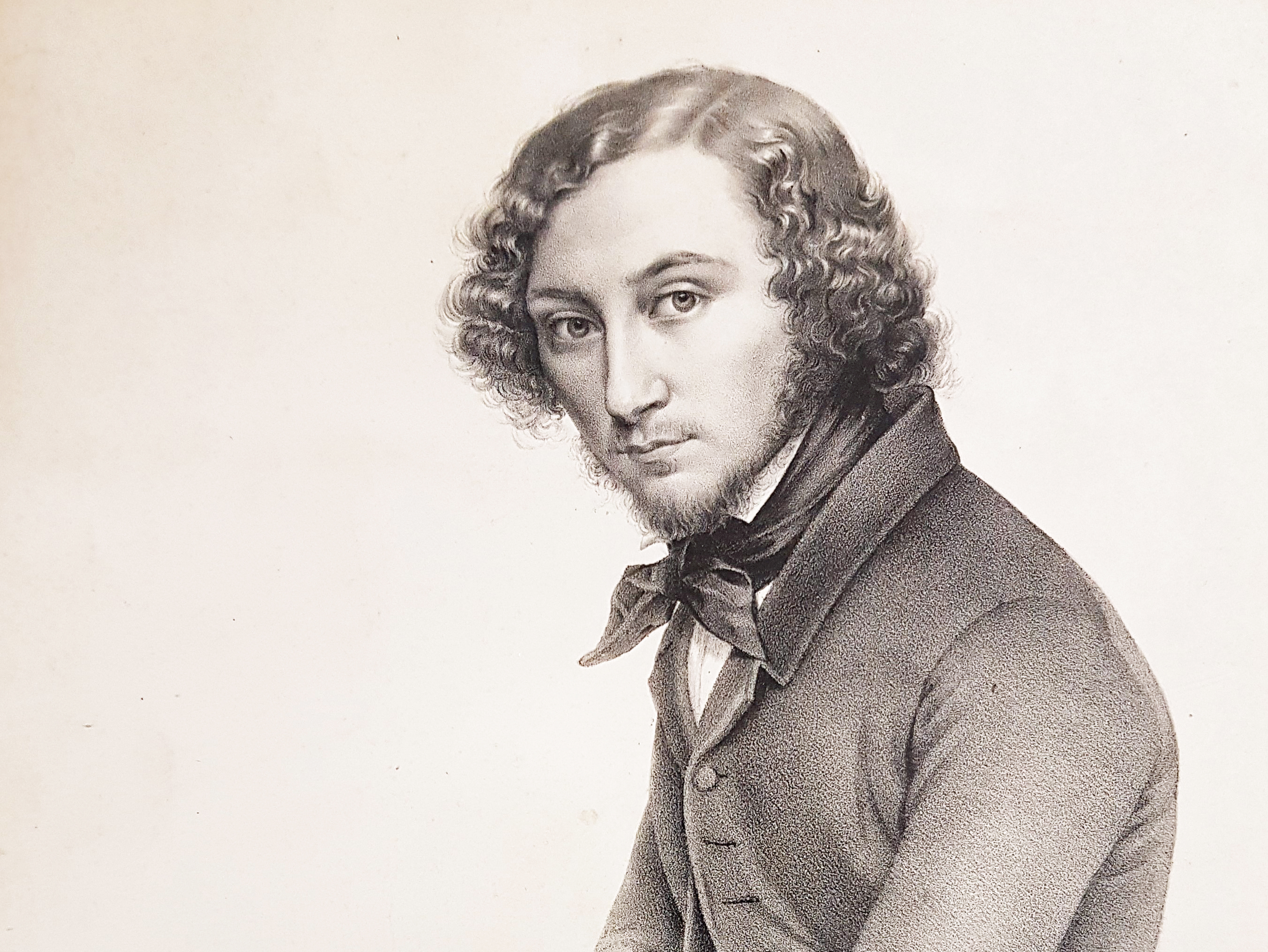
Carl Maria von Weber suffered from health problems throughout his life and knew that he would not live to a ripe old age due to tuberculosis. The last months of his life must have been painful – he could barely breathe and could no longer wear shoes because of his swollen legs; he stood in front of the orchestra in slippers; and because he could barely speak and was spitting up blood, a kind of interpreter communicated with the musicians. Despite this, Weber still wanted to earn as much money as possible for his family and fought against his approaching death.
On 16 February 1826, he travelled to London via Paris to premiere »Oberon«. Travelling and workload took their toll on him. Carl Maria von Weber died in the night of 4 to 5 June 1826; his body was buried in the Catholic St. Moorsfield Chapel. In the end, Weber had to submit to fate – in keeping with his life motto: »As God wills!«
Weber in Hosterwitz
»O Hosterwitz! O peace,« wrote Carl Maria von Weber in his diary in May 1823. In the summer months of 1818/19 and 1822 to 1824, the court music director had rented a few rooms in a winegrower's house in Hosterwitz, near Dresden, where he was to spend the summer months with his family. The rental had become necessary because Weber had taken over the direction of the summer opera performances and musical services for the court at nearby Pillnitz Palace. The short distance between the palace and his quarters allowed him to work flexibly – and so rehearsals were also held in the Winzerhaus.

Weber created some of his most important compositions in Hosterwitz, such as the operas »Euryanthe« and »Oberon«, many songs and chamber music. The landscape inspired him and here he found peace and leisure to compose. The household included several pets. In addition to a dog, a cat and a raven, there was also Schnuff the capuchin monkey, who was treated like a member of the family. The poet and husband of his granddaughter, Ernst von Wildenbruch, later had a memorial plaque placed on the arbour in the garden of the winegrower's house, suggesting that »Der Freischütz« was written in Hosterwitz.
The famous opera »Der Freischütz« may have been inspired and influenced by walks in the nearby Keppgrund and excursions to Saxon Switzerland. Weber loved the seclusion and informality of the countryside.
Abb. u.: Carl Robert Kummer, Sächsische Schweiz (Zwei Wanderer im Elbsandsteingebirge), 1827, (Detail). Foto: Franz Zadnicek, Städtische Galerie Dresden -- Kunstsammlung, Museen der Stadt Dresden

From Hosterwitz to the Elbe Sandstone Mountains
Hotspots for travellers in the 19th century
Around 1800, Saxon and Bohemian Switzerland as far as the Giant Mountains became an increasingly popular destination for travellers and excursions. People travelled along what is now known as the Malerweg or to Pfaffenstein, Gohrisch and Papststein as well as into the Bielatal valley; the rear of Saxon Switzerland and the Bohemian part of the Elbe Sandstone Mountains were also opened up. Catering facilities at prominent vantage points welcomed excursionists, and chair bearers and guides offered their services. From the middle of the 19th century, the railway and passenger steamships boosted tourism.
The aristocracy and bourgeoisie followed their longing for the idyllic natural surroundings or took a holiday at a spa. Countless artists and poets were inspired by these regions in the spirit of the Romantic experience of nature and the ideal of a perfect landscape. These included the poets Hans Christian Andersen, Theodor Fontane, Johann Wolfgang von Goethe, Heinrich von Kleist, Theodor Körner and Adam Mickiewicz, the painters Carl Blechen, Caspar David Friedrich, Anton Graff, Adrian Ludwig Richter, William Turner and Adrian Zingg as well as Johann Heinrich Pestalozzi and Alexander von Humboldt. Carl Maria von Weber, who regularly travelled from Hosterwitz to the Elbe Sandstone Mountains, was in the very best of company.
Weber's retreat
The winegrower's house in Hosterwitz
Weber welcomed friends and artists to his summer idyll, such as the poets Friedrich Kind, Ludwig Tieck and Wilhelm Müller, the composers Johann Nepomuk Hummel and Heinrich Marschner and the singer Wilhelmine Schröder-Devrient. They discussed projects, made music together or enjoyed nature over a glass of wine.
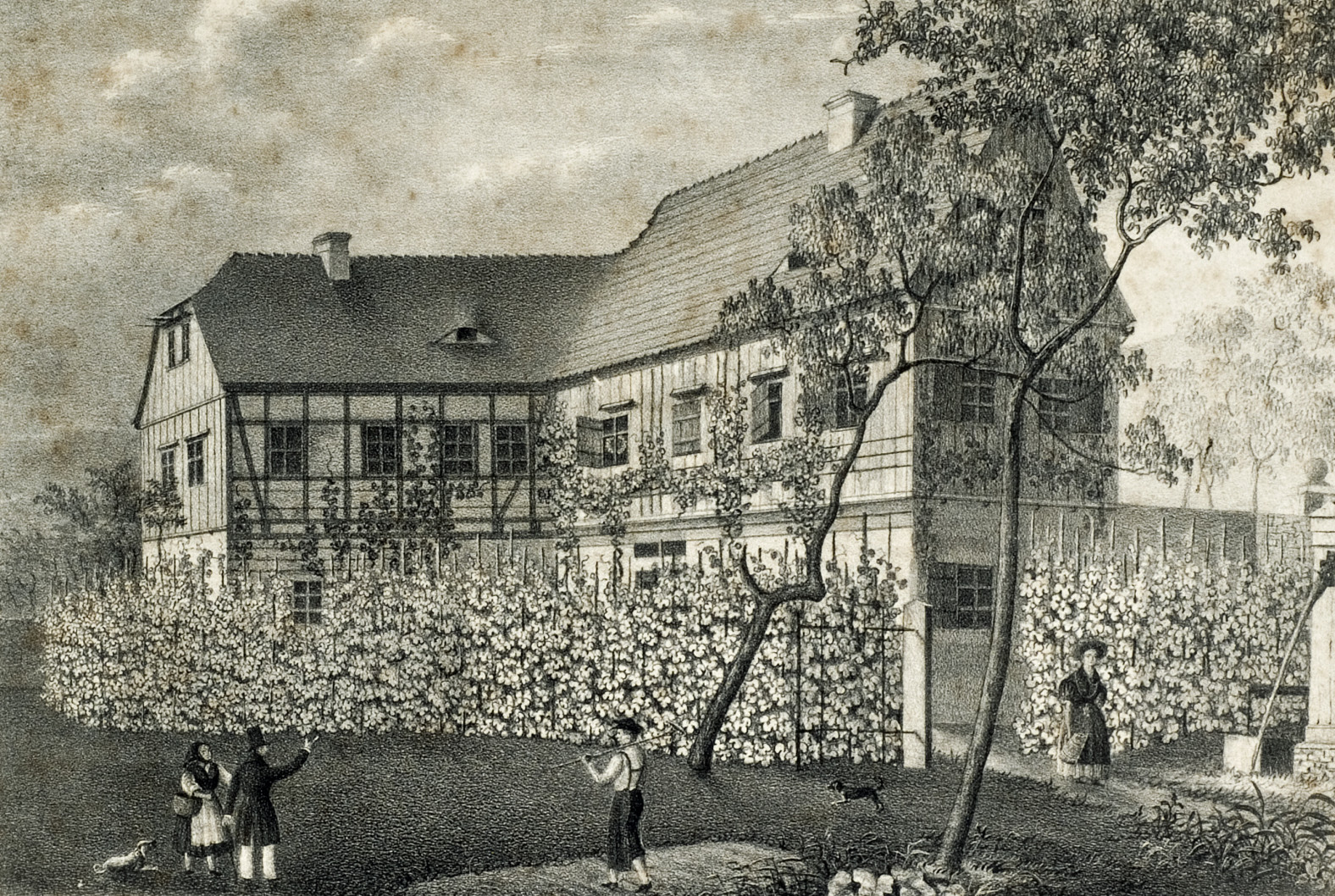
The house, which Weber lived in temporarily during the summer months, is now one of the oldest surviving residential buildings in Dresden. Built around 1664/65 as a simple half-timbered house, an extension was added in the 18th century; a wooden veranda was added at the end of the 19th century. During Weber's lifetime, the building, which was located on »Äpfelallee« (now Dresdner Straße 44), belonged to the Felsner family of winegrowers. Weber lent his landlord money to build a well and a stable with a carriage house; he most likely even contributed to the construction costs.
»Der Freischütz«, a super hit in the history of opera
The »Jägerchor« and the »Jungfernkranz« from »Der Freischütz« are timeless melodies that everyone is likely to have encountered at some point. The work is one of the most frequently performed operas in the German-speaking world and is considered the archetype of Romantic opera par excellence. The great themes of Romanticism take centre stage here: the forest and nature, supernatural forces, fairy-tale symbolism, Faustian depth and – of course – love.
Weber is said to have become acquainted with the Freischütz saga as early as 1810 during a visit to Neuburg Abbey near Heidelberg and was captivated by the material. Shortly after taking up his post in Dresden on 17 January 1817, he met the poet Johann Friedrich Kind. Kind introduced him to the material from August Apel's »Book of Ghosts«.
»This evening at the theatre I spoke to Friedrich Kind, who was so enthusiastic yesterday that he started an opera for me today. Tomorrow I'm going to see him to finalise the plan. The subject is excellent, gruesome and interesting. The Freyschütze. I don't know if you know the old folk tale.«
